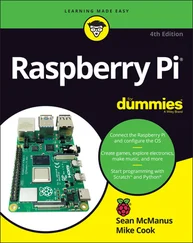Alan R. Simon - Side Hustles For Dummies
Здесь есть возможность читать онлайн «Alan R. Simon - Side Hustles For Dummies» — ознакомительный отрывок электронной книги совершенно бесплатно, а после прочтения отрывка купить полную версию. В некоторых случаях можно слушать аудио, скачать через торрент в формате fb2 и присутствует краткое содержание. Жанр: unrecognised, на английском языке. Описание произведения, (предисловие) а так же отзывы посетителей доступны на портале библиотеки ЛибКат.
- Название:Side Hustles For Dummies
- Автор:
- Жанр:
- Год:неизвестен
- ISBN:нет данных
- Рейтинг книги:4 / 5. Голосов: 1
-
Избранное:Добавить в избранное
- Отзывы:
-
Ваша оценка:
- 80
- 1
- 2
- 3
- 4
- 5
Side Hustles For Dummies: краткое содержание, описание и аннотация
Предлагаем к чтению аннотацию, описание, краткое содержание или предисловие (зависит от того, что написал сам автор книги «Side Hustles For Dummies»). Если вы не нашли необходимую информацию о книге — напишите в комментариях, мы постараемся отыскать её.
Side Hustles For Dummies
Side Hustles For Dummies
Side Hustles For Dummies — читать онлайн ознакомительный отрывок
Ниже представлен текст книги, разбитый по страницам. Система сохранения места последней прочитанной страницы, позволяет с удобством читать онлайн бесплатно книгу «Side Hustles For Dummies», без необходимости каждый раз заново искать на чём Вы остановились. Поставьте закладку, и сможете в любой момент перейти на страницу, на которой закончили чтение.
Интервал:
Закладка:
CAN VOLUNTEER WORK BE A SIDE HUSTLE?
Take another look at the broad definition of a side hustle: an activity outside of your full-time job in which you are materially invested. Maybe you’re materially invested in some type of volunteer work — dog walking a couple times each week at a nearby animal shelter, or being on the board of a local charity that assists homeless veterans. You aren’t getting any sort of pay for this volunteer activity, but it certainly takes up a fair amount of your time and needs to be balanced with your full-time job. So, could you think of your volunteer work as a side hustle?
Well, maybe. If you limit the definition of a side hustle to an activity — any activity — that fits the “work equals pay” equation, then no, volunteer work isn’t really a side hustle. However, if you leave aside the compensation and income aspect of side hustles, you may, indeed, find a great deal of similarity between certain types of volunteer work and certain kinds of side hustles.
But now we’re diving deep into the terminology weeds, or splitting hairs, or whatever other metaphor you’d like to apply here. A better way to think of volunteer work and side hustles is that you could combine “traditional” side-hustle activities with your volunteer work to benefit a particular cause. You could, for example, write blog posts or create YouTube videos about your favorite cause, which bring in a little bit of advertisement-sponsored revenue. Or you could create an online retail site in Shopify and sell donated clothes — sort of an online thrift store. You could then (maybe after covering your costs) donate some or even all of your proceeds to your favorite charity. So essentially, you’re engaged in some sort of side-hustle activity, but you’re forgoing part of the “reward structure” — the income — for a good cause.
Extending your knowledge and gaining experience
Your journey into the world of side hustles might follow that fabled path of least resistance, where you embark on an activity or business that is similar to what you do for your day job, but different enough to scratch that side-hustle itch. I should know — that’s exactly how I jumped into the side-hustle game many years ago.
Many years ago, in the early days of my professional career, I was a U.S. Air Force computer systems officer. I was stationed at Cheyenne Mountain in Colorado Springs, Colorado, and was assigned to an office of about ten other officers and civilians who were responsible for writing software for the missile warning defense of the United States. Basically, our software received messages from sensor sites all around the world that detected missile launches and then used some head-spinning math to figure out if this alert was just a test launch by “the other side” or if (cue the ominous music) they had just started World War III.
A pretty cool-sounding job, right? This was in the early and mid-’80s, at the height of the Cold War, and you could say that business was good for the missile launch detection mission and expanding the functionality of our software to support new and upgraded sensor sites. Only one problem: Our software was written in an ancient programming language called JOVIAL that was already obsolete and was only used in certain military-oriented applications and systems. Well, make that two problems: Our JOVIAL-written software ran on antiquated UNIVAC mainframe computers from the ’60s and ’70s. (In fact, our UNIVAC was so out of date that the university where I went to school — Arizona State — had retired its UNIVAC two years earlier because it had become too obsolete for academia!)
The early and mid-’80s were also when so-called “microcomputers” — what we know as personal computers today — were hitting the market and quickly becoming wildly popular, not only for home use but also in business. Wouldn’t it be great to get some experience in this hot new area of computer technology, even if the hardware and software of my full-time job was light-years behind what was coming to market? I was almost certain that I wasn’t going to stay in the Air Force past the four years that I owed in exchange for my college scholarship, and when I reentered the civilian world, I would be four years behind so many other people in the tech field.
I bought my first personal computer and started a little application development and computer training side business, aimed at small businesses and not-for-profits in Colorado Springs and in Arizona, where I had gone to college and lived before going on active duty. And of course, I crammed and crammed and crammed, learning as much as I could about these new-fangled microcomputers and then-modern PC programming languages and software development frameworks.
Soon enough, I landed my first consulting project at a local tourism-oriented business. That first project was a doozy! I learned the hard way how packaged software development frameworks didn’t always work as advertised and were often full of bugs (as we refer to software problems in the programming trade). I had to program a lot of workarounds into the customer’s system to prevent the applications from blowing up, or to help them get back up and running if their application suddenly and abruptly terminated. I think I sized and priced the job at about 150 hours and wound up putting an extra 30 or 40 hours into the project that I didn’t bill for to handle all the complications.
But I learned a ton! And I learned even more on the next customer’s project, and the next one after that. Fast-forward to when I got ready to leave the Air Force and started looking for a job. Everything I learned during four years of doing software projects (and also some computer training) on the side — in other words, my first side hustle — really helped me get the perfect job and jump-start my civilian tech career.
Was I trying to make some extra money above and beyond my Air Force salary? Of course! Back in those days, junior officers didn’t make a whole lot of money. So, I was absolutely after money!
But even more than the additional income, my primary motivation was the knowledge and experience that I gained from my side-hustle consulting and software business. Could I have just bought a PC and taught myself modern programming skills and microcomputer administration without starting a side hustle? Sure. But my thinking at the time was — and still is, even with 40 years of hindsight — that if I didn’t force myself to spend all those hours behind a keyboard because I owed finished applications to my clients, I might not have had the motivation to do more than a perfunctory amount of self-learning. And I almost certainly wouldn’t have run into all the unforeseen software hiccups for which I had to find workarounds, which served me well even in my full-time Air Force job, not to mention when I became a software product developer after leaving the Air Force.
 You can do the same thing that I did so many years ago, no matter what your full-time job is or what industry you currently work in: Start a side hustle to learn new skills, and make some money at the same time for your efforts!
You can do the same thing that I did so many years ago, no matter what your full-time job is or what industry you currently work in: Start a side hustle to learn new skills, and make some money at the same time for your efforts!
Jumping onto a different career track
Maybe you’ve been in your career field for 10 or even 20 years, but you’re at the point where going to work every day is starting to be harder and harder. True, you’re making decent money. But the days drag, and you can’t wait until the workday is over.
Or maybe you wound up with the job of your dreams, but those dreams turned out to be more of a fantasy. Sure, you knew about the crushing hours and the wearying travel, but you were actually looking forward to the fast-track lifestyle on the road toward that big-time paycheck. Now, after only a year or two, you’re asking yourself, “What in the world was I thinking?”
Читать дальшеИнтервал:
Закладка:
Похожие книги на «Side Hustles For Dummies»
Представляем Вашему вниманию похожие книги на «Side Hustles For Dummies» списком для выбора. Мы отобрали схожую по названию и смыслу литературу в надежде предоставить читателям больше вариантов отыскать новые, интересные, ещё непрочитанные произведения.
Обсуждение, отзывы о книге «Side Hustles For Dummies» и просто собственные мнения читателей. Оставьте ваши комментарии, напишите, что Вы думаете о произведении, его смысле или главных героях. Укажите что конкретно понравилось, а что нет, и почему Вы так считаете.












